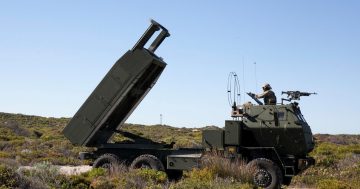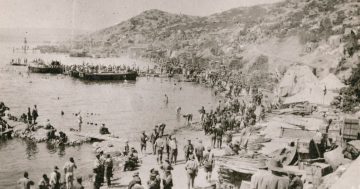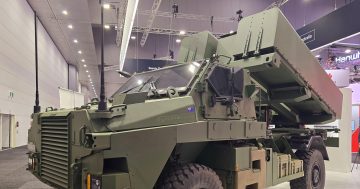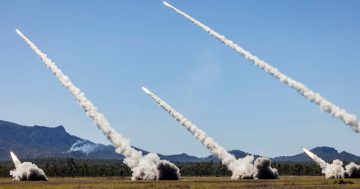Reviewed by Robert Goodman.
By Robert Harris, Penguin, $32.99.
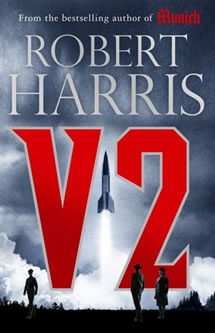 After spending some time in a post-apocalyptic feudal future (The Second Sleep), Robert Harris returns to what is clearly one of his favourite milieu in V2. Harris explored an alternative end to World War 2 in his debut Fatherland, but has since dug in with more down-the-line historical fare that has included Enigma and, more recently, Munich. Both of these books took significant events around World War 2 and looked at them through the eyes of fictional players who sit around the main historical actors. And so it is with V2, which much like Munich has two protagonists who are on opposite sides of the conflict.
After spending some time in a post-apocalyptic feudal future (The Second Sleep), Robert Harris returns to what is clearly one of his favourite milieu in V2. Harris explored an alternative end to World War 2 in his debut Fatherland, but has since dug in with more down-the-line historical fare that has included Enigma and, more recently, Munich. Both of these books took significant events around World War 2 and looked at them through the eyes of fictional players who sit around the main historical actors. And so it is with V2, which much like Munich has two protagonists who are on opposite sides of the conflict.
The action of V2 takes place over just a few days towards the end of World War 2. Germany is losing the war but refusing to admit that defeat is an actual possibility. A ten year development program has finally delivered them flying bombs and the German army is flinging these bombs at London from the coast of Holland. These attacks are both a way of retaliating for the relentless bombing of German cities and to try and regain some momentum in the war. Rudi Graf is the engineer tasked with overseeing the launches from Scheveningen and is constantly under the watchful eyes of the SS. Graf is a long-time associate of Werner von Braun, the father of the German rocket program, although before it was militarised their dream was of using the technology to go into space. As Graf is ordered to increase the attacks, his belief in and support for the program diminishes.
On the other side of North Sea, Kay Caton-Walsh finds her affair with a high ranking member of the Air Force brought to an abrupt end, partly as a consequence of a V2 attack. Trying to avoid the emotional and professional fallout from the affair she gets him to send her with a group of other women from the Women’s Auxiliary Air Force (WAAF) to Belgium. The team, mainly made up of mathematicians has been put together quickly as part of a program to try and triangulate the launch site of the V2s. The plan is to use radar and speedy trigonometry to locate and hopefully bomb the mobile V2 launch vehicles.
There is no mystery or suspense here, just a ground eye view of the V2 launch program and the efforts to bring it to an end. Along the way, through Graf’s flashbacks, Harris takes the opportunity to recount the development of the German rocket program including the construction of a subterranean production facility by POW slave labour. Throughout this section and despite the plans of the Nazi Party, is von Braun’s vision, reflected in Graf, of using rockets to go into space. Many readers will already know that following the war, von Braun, despite his involvement in programs like the V2, was taken in by the Americans and was instrumental in the development of both the US space and missile programs.
Munich attempted to put a new spin on some well known events and recontextualised the role of Neville Chamberlain in the start of World War 2. V2 does not seem to have these ambitions. It is a straightforward historical narrative with little in the way of nuance. But Harris does still effectively deliver another fascinating and engaging slice of the complex story of World War 2.
This and 500 more reviews can be found at www.pilebythebed.com.



